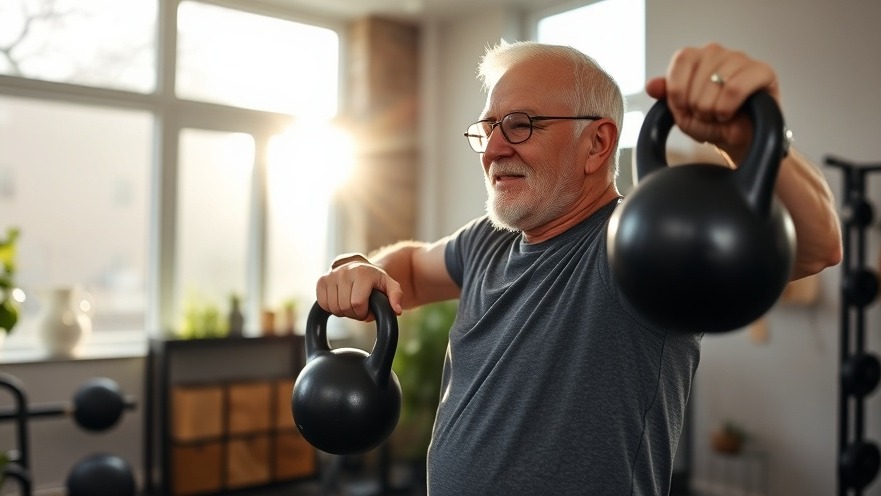
Introduction: Rewriting the Rules of Aging
What if turning 50 didn’t mean slowing down—but gearing up for the most vital, energized chapter of your life?
Across the globe, doctors, researchers, and changemakers are flipping the script on aging.
They’re not just adding years to their lives—they’re adding life to their years.
From Harvard’s Dr. David Sinclair, who believes aging is “a disease we can treat,” to Dr. Peter Attia, who trains like an Olympian in his 50s to prepare for his 90s, the message is clear: your best years may still be ahead.
“Food is the most powerful drug on the planet.” — Dr. Mark Hyman
This isn’t about chasing youth. It’s about thriving—using science, mindset, and everyday habits to build a better future at any age.
And the tools are more accessible than ever: smart wearables, anti-inflammatory diets, personalized supplements, strength training protocols, and evidence-backed strategies that make longevity not just possible, but practical.
Foundational Background: The New Science of Living Younger, Longer
Today, longevity isn’t just about lifespan. It’s about healthspan—how many years you stay sharp, mobile, and pain-free.
Dr. David Sinclair, a geneticist at Harvard Medical School, has spent decades studying the biology of aging. His research focuses on sirtuins, NAD levels, and epigenetic reprogramming—terms that once sounded futuristic, but now influence biohacking routines around the world.
Meanwhile, Dr. Peter Attia—a Stanford-trained physician and former ultra-endurance athlete—has built a medical practice around one powerful idea: Don’t just avoid disease. Train for longevity like you would for a marathon.
Then there’s Dr. Mark Hyman, the founder of the Cleveland Clinic’s Center for Functional Medicine. He believes that aging can be slowed or even reversed through a “food as medicine” philosophy.
These aren’t fringe figures. They’re mainstream innovators driving billion-dollar industries, influencing everything from how hospitals approach preventive care to how individuals manage daily routines.
In the past, aging was passive. Now, it’s something we can shape—through what we eat, how we move, and what we prioritize.

Turning Points or Major Milestones
Several milestones mark the turning of the tide in how we view aging.
One of the most groundbreaking came from Dr. Sinclair’s lab, where researchers used gene therapy to partially reverse aging in mouse eyes. That study shook the scientific world and opened doors to human trials aimed at tissue regeneration and age reversal.
Dr. Attia’s shift from surgical oncology to preventative medicine came after realizing most of his patients were dying from chronic diseases—like diabetes and heart failure—that could have been delayed or prevented. He began designing “longevity protocols” tailored to individual physiology.
Dr. Hyman famously took a biological age test and discovered he was over 10 years younger than his actual age. His transformation—documented publicly—used a combination of anti-inflammatory eating, detoxification, exercise, and stress reduction.
Other milestones:
The release of Sinclair’s bestselling book Lifespan in 2019 catapulted the longevity conversation into the mainstream.
Attia’s podcast, The Drive, became one of the most popular health podcasts globally.
Hyman helped design policy for the White House Conference on Nutrition, Health & Hunger in 2022.
Longevity is no longer the realm of labs and elite clinics. It’s a lifestyle movement powered by access, tech, and empowerment.
Core Insights, Strategies, or Innovations
Move with Purpose
If you take one thing from Attia’s work, it’s this: Exercise is the single most powerful tool for longevity.
He recommends structuring your fitness like a pyramid:
Base Layer: Zone 2 cardio—walking briskly or cycling at a pace where you can still talk.
Middle Layer: Strength training at least 2–3 times per week to prevent sarcopenia (muscle loss).
Top Layer: High-intensity VO₂ max sessions to maintain cardiovascular resilience.
Attia trains for what he calls “The Centenarian Decathlon”—a series of physical goals he wants to achieve in his 90s (like picking up a grandchild or getting off the floor unassisted).

Eat to Heal
Dr. Hyman’s approach merges paleo and vegan—he calls it “pegan.”
It emphasizes:
Low-glycemic fruits and vegetables
Clean protein like wild salmon and pasture-raised chicken
Healthy fats from olive oil, nuts, and avocados
Spices like turmeric and ginger with anti-inflammatory properties
Dr. Sinclair supports intermittent fasting and time-restricted eating, typically skipping breakfast and consuming meals in a 6–8 hour window. This activates autophagy and boosts mitochondrial function—key cellular repair mechanisms linked to aging.
Both experts agree: Sugar, processed food, and industrial seed oils are the enemies of longevity.
Try Smart Supplementation
While personalized testing is ideal, many experts recommend starting with:
NMN (Nicotinamide Mononucleotide) – Boosts NAD+, important for energy and cellular repair.
Magnesium Glycinate – Supports muscle, nerve, and sleep function.
Vitamin D3 with K2 – Boosts immunity, mood, and bone health.
Omega-3s – Reduces inflammation and supports heart and brain health.
Resveratrol – Found in red wine, linked to DNA repair and metabolic health.
Sinclair personally takes NMN and resveratrol daily, along with a plant-based multivitamin and statins (for lipid control).
Track What Matters
Tech is changing everything.
Dr. Attia uses continuous glucose monitors (CGMs) and sleep trackers like the Oura Ring to dial in real-time feedback.
Popular tools include:
Levels Health – Monitors glucose response to food and lifestyle
WHOOP – Focuses on recovery, strain, and HRV
Eight Sleep Pod – Tracks temperature and improves sleep quality
These tools shift longevity from “guesswork” to a personalized, data-driven strategy.

Unique Value or Differentiators
What sets these longevity leaders apart isn’t just knowledge—it’s alignment between values and lifestyle.
They don’t just talk about health. They live it.
Dr. Hyman grows food in his backyard and practices yoga daily.
Dr. Attia logs every workout and measures biomarkers quarterly.
Dr. Sinclair skips sugar, keeps stress low, and journals gratitude.
They also emphasize the emotional and spiritual side of longevity:
Joyful relationships
Purposeful work
Connection to nature
Daily reflection or mindfulness
It’s not just about staying alive—it’s about loving your life.
Practical Tips or Takeaways
If you want to follow in their footsteps, here are 10 things you can do today:
Start intermittent fasting: Try a 16:8 window (eat between noon and 8 p.m.).
Walk after meals: Improves blood sugar control and digestion.
Strength train twice a week: Focus on compound movements like squats, rows, and deadlifts.
Sleep 7.5 to 9 hours: Make your room cool, dark, and tech-free.
Eat real food: 80% plants, minimal sugar, whole ingredients.
Drink filtered water: Add minerals or sea salt to replenish electrolytes.
Take magnesium at night: It helps you relax and improves sleep quality.
Limit alcohol: Even moderate use can accelerate aging.
Track your progress: Use wearables, food logs, or journals.
Laugh often and love deeply: Social connection is a longevity superpower.
Remember, longevity is a journey—not a race. The point is progress, not perfection.

Inspirational Wrap-Up: Living with Vitality, Not Just Longevity
Longevity isn’t about squeezing more years onto the calendar.
It’s about filling your years with strength, meaning, and light.
Dr. Sinclair says, “Aging is optional.”
Dr. Attia sees his 90s as his athletic prime.
Dr. Hyman’s goal is to die young—as late as possible.
Their message is powerful:
You can start today.
You can build a body and mind that support you for decades.
You can fall in love with life again—even in your 50s, 60s, or beyond.
“It’s not how long you live, it’s how well you live.” — Dr. Mark Hyman
Your longevity journey starts with one step. Why not take it now?
 Add Row
Add Row  Add
Add 



 Add Row
Add Row  Add
Add
Write A Comment